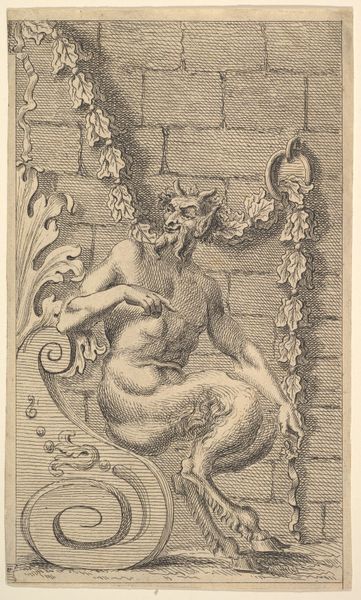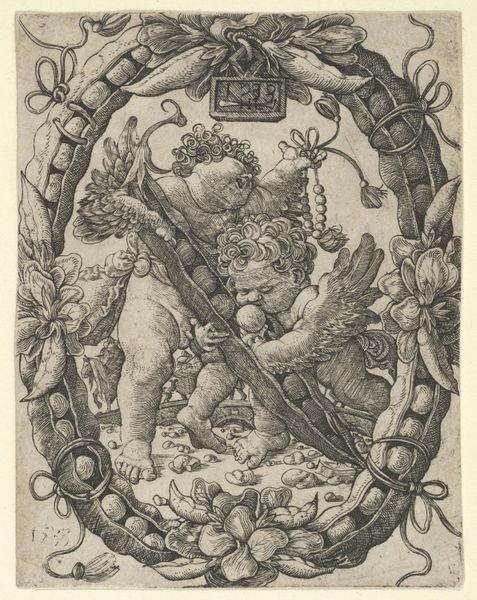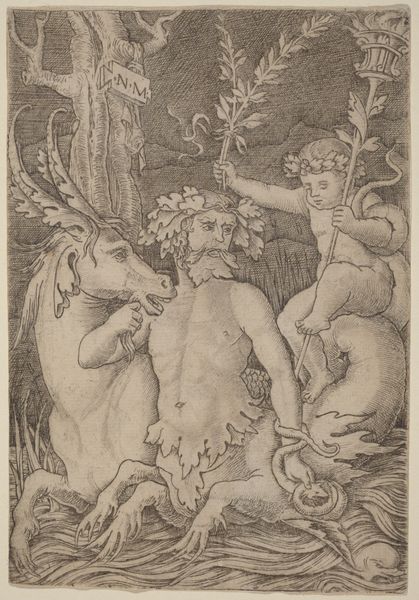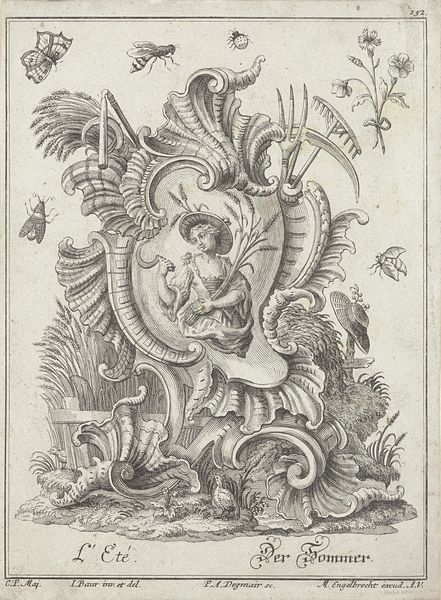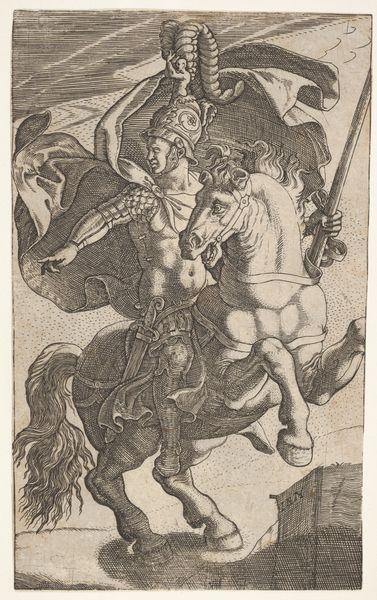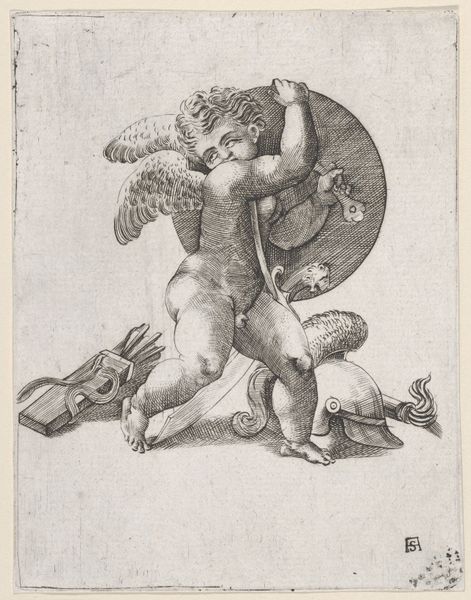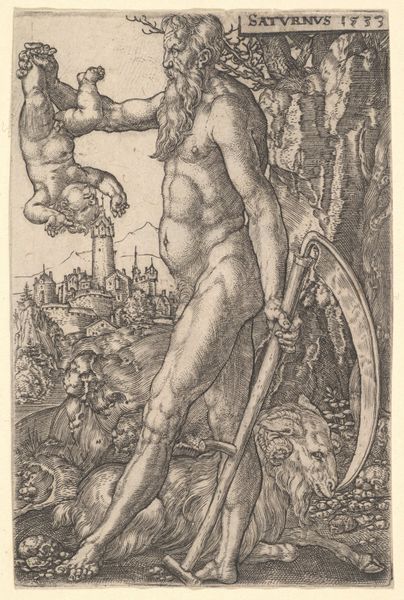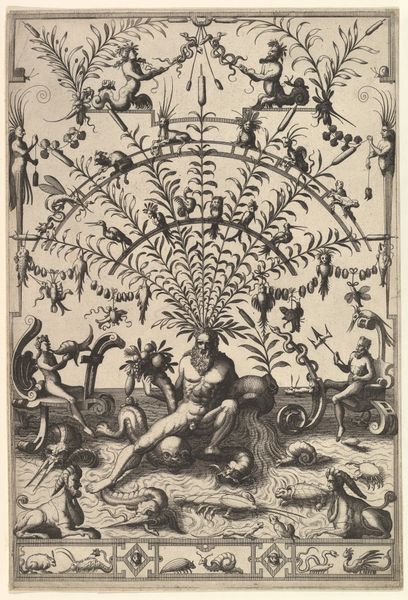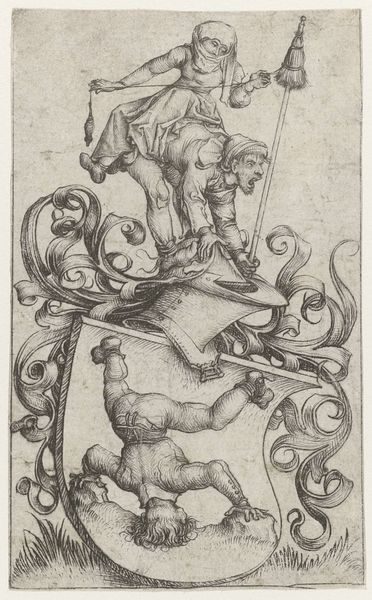
print, etching
#
allegory
# print
#
etching
#
landscape
#
mannerism
#
figuration
#
nude
Copyright: National Gallery of Art: CC0 1.0
Curator: Here we have Master HL's "Cupid Riding a Snail over Fungus Vegetation," an etching from around 1533. Editor: The first thing that strikes me is the sheer oddity of it. It's chaotic, even grotesque. A fleshy baby with wings perched atop a snail crawling through what looks like a garden of tumors. The texture alone is unnerving. Curator: Yes, the bizarre imagery is compelling. It's steeped in symbolism, hinting at complex allegories. The snail, often seen as representing sloth, paired with Cupid, the god of love… the contrast suggests a commentary on the pitfalls of desire and the slow, arduous path of love. Editor: Pitfalls indeed. The etching technique allows for an astonishing level of detail. Look at the folds of skin, the strange vegetal growth – the materiality seems crucial to its meaning. Was this image meant to circulate widely? How would different social classes have engaged with its message? Curator: Prints such as this would have been accessible to a broader audience than paintings. The iconography speaks to humanist and Neo-Platonic ideas popular at the time, with love as a force that elevates, or in this case perhaps, burdens. It's a visualization of inner turmoil. Editor: I’m fascinated by the labor involved in creating this level of detail through etching. And how the consumption of this imagery perhaps influenced attitudes towards the body, nature, even morality itself. Did people really understand it? Or just enjoy its peculiarity? Curator: It likely functioned on many levels, from scholarly interpretation to pure visual delight. The Mannerist style embraced artifice and exaggeration, making room for multiple readings and emotional responses. Editor: Well, it certainly challenges easy answers. Its creation depended on available resources and artisanal knowledge, leading us to probe the material foundations that shaped artistic creation in the 16th century. Curator: An enduring testament to the intricate dance between love and our more earthly imperfections. Editor: Absolutely. It makes one reconsider the very idea of cupid, turning the symbol of love into something both fragile and monstrous, rooted in its making.
Comments
No comments
Be the first to comment and join the conversation on the ultimate creative platform.
